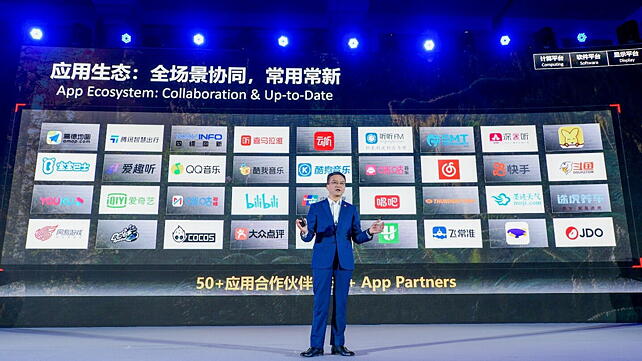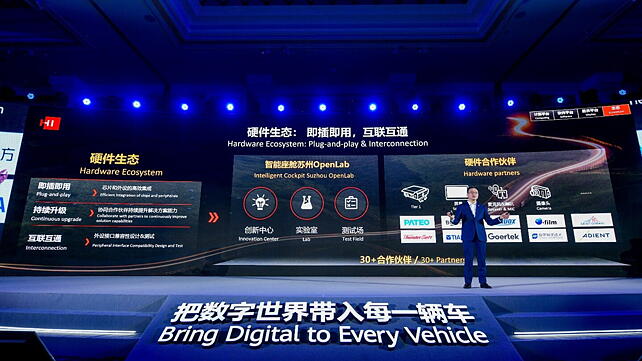
Chinese electronics manufacturer, Huawei, plans to collaborate with automobile manufacturers and partners in the industry to facilitate the evolution of intelligent cockpit, it said in a press release.
The company has launched its computing platform based on Kirin chipsets, a cockpit-oriented software platform, a display platform, and a hardware and software ecosystem.
Wang Qingwen, General Manager, Smart Cockpit Product Dept, Huawei Intelligent Automotive Solution BU said the company, through its hardware ecosystem, has realised the interconnection between distributed devices inside and outside the vehicles, and the connection of those devices to computing and software platforms.
“Huawei has opened up APIs to help automobile manufacturers, Tier I suppliers, and ecosystem partners to quickly develop differentiated services and features that meet user requirements, enabling an optimal, interesting, and enjoyable driving experience of users,” Qingwen said.
Solution Platforms
To ensure a smooth user experience throughout the vehicle lifecycle, the company has designed pluggable Kirin vehicle-mounted chipset modules to enable easy upgrade and iteration of chips and modules and to maintain the peak performance of the cockpit.
The Harmony Operating System (Automotive) is a vehicle OS developed by Huawei. It provides capabilities such as one-chip multi-screen, multi-concurrency, and runtime deterministic assurance to meet the requirements of mobility scenarios.
Through HarmonyOS, a vehicle's head unit can connect with other intelligent terminals and share information. Various sound hardware devices can connect to people, vehicles, and homes.

Huawei also provides Huawei Mobile Services (Automotive) core capabilities, such as voice, vision, sound partitioning, effects, and touch control, and fully opens these capabilities through APIs, which allow automotive manufacturers, Tier I suppliers, and application ecosystem partners to develop functions, services, features and applications.
As autonomous driving continues to develop, mobility will be easier and users will spend more time on entertainment. Huawei has drawn on its long history with optical technology and augmented reality (AR) to build the AR-HUD (head-up display). The AR-HUD is a small device that projects a large display, with high-definition video quality. It provides users with driving safety assistance as well as immersive audio-visual entertainment.
The Huawei Cockpit Vision features a large 15.6-inch 2K screen. The narrow-bezel design gives it a screen-to-body ratio of 87%. With integrated commissioning of Kirin chips and software, Huawei Cockpit Vision delivers vivid colour and has received TÜV Rheinland eye comfort certification.
With NFC and millimetre-wave radar, it also supports one-touch transmission, one-touch connection, and gesture control, allowing users to enjoy the same control experience they would have on a flagship smartphone, claimed the company.
Huawei, meanwhile, has set-up OpenLab Suzhou, where it performs joint innovation and interoperability tests on devices with its hardware partners. Qingwen said that Huawei wants partners’ devices to be plug-and-play, with continual hardware updates available throughout the vehicle lifecycle.
In its software ecosystem, Huawei works with partners to perform in-depth experience optimisation and function development for in-vehicle scenarios, enabling applications to be up-to-date. Currently, there are more than 50 application partners, and Qingwen said Huawei expects more and more partners to join the application ecosystem.
It is Huawei’s dream to bring digital to every cockpit, Qingwen said. The company hopes to work with automotive manufactures, Tier I suppliers, application partners, and peripheral hardware partners on Huawei's software operating system and core computing platform to achieve shared success and accelerate cockpit intelligence, said the release.

